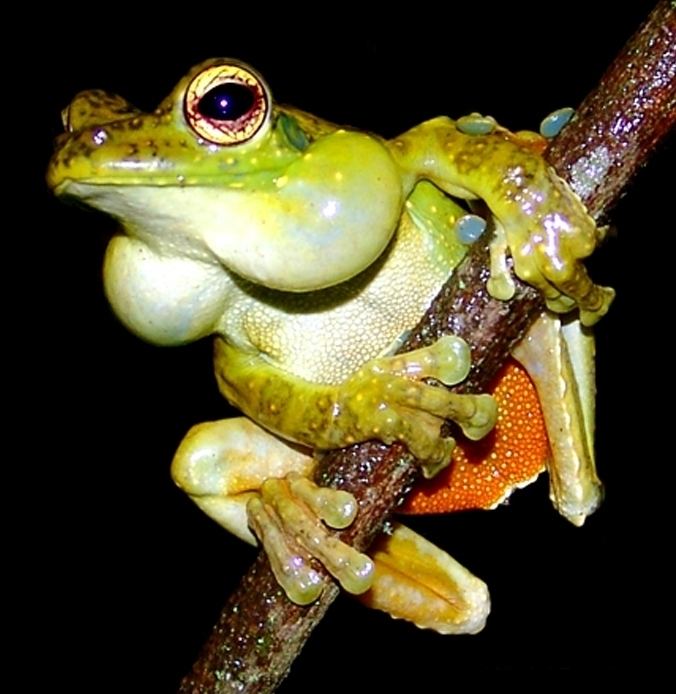Kingdom Animalia Family Hylidae Phylum Chordata Rank Species | Order Anura Scientific name Itapotihyla langsdorffii Higher classification Itapotihyla | |
 | ||
Genus Itapotihyla
Faivovich, Haddad, Garcia, Frost, Campbell, and Wheeler, 2005 Similar Dendropsophus anceps, Aplastodiscus perviridis, Canebrake tree frogs, Scinax fuscovarius, Scinax berthae | ||
2011 04 18 18 00 brt itapotihyla langsdorffii ornithos
Itapotihyla langsdorffii (common name: ocellated treefrog) is a species of frog in the Hylidae family. It is monotypic within the genus Itapotihyla. It is found in the Atlantic Forest biome of Brazil, with an isolated population in eastern Paraguay and adjacent Brazil and northeastern Argentina.
Contents
- 2011 04 18 18 00 brt itapotihyla langsdorffii ornithos
- Itapotihyla langsdorffii eating comendo
- Description
- Reproduction
- Trophic interactions
- Habitat and conservation
- References
Itapotihyla langsdorffii eating comendo
Description
Itapotihyla langsdorffii are relatively large treefrogs. They show sexual dimorphism, with females (mean snout-vent length 103 mm (4.1 in)) being larger than males (81 mm (3.2 in)).
Reproduction
Reproduction takes place in temporary and permanent pools inside rainforest. It is an explosive breeder with a mean brood size of over 6000 eggs. Breeding is associated with intense vocalization by males. In addition to vocalization, male–male interactions may involve grabbing and pushing and even direct physical combat. This kind of behaviour is more common in species where males are larger than females (see sexual selection in frogs).
Trophic interactions
The diet consists mostly of arthropods (in particular grasshoppers and crickets), but also vertebrate remains (other frogs including Physalaemus crombiei and Scinax argyreornatus as well as unidentified bird feathers) can be found in their stomach contents. These frogs themselves may be preyed by colubrid snake Chironius bicarinatus.
Habitat and conservation
Itapotihyla langsdorffii is an arboreal frog occurring on shrubs and trees inside rainforest. It is restricted to pristine habitats. Itapotihyla langsdorffii is locally abundant in suitable habitats in Brazil. The Paraguayan population is assumed to be in decline because of habitat loss and possibly seriously threatened. However, at species level it is not considered threatened.
